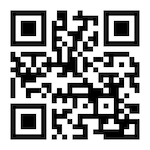Self-checkout technology is at the forefront of rapid retail digitization, transforming the checkout experience for retailers and consumers alike. But for retailers aiming to stay a step ahead of the curve, adopting a customized self-checkout solution as opposed to a generic solution is not just innovative, but necessary. While implementing a self-checkout built specifically for your store may seem complex, GAD makes the entire process smooth and painless.
GAD is an authorized distributor of Crane Payment Innovations (CPI). As such, we have the training, knowledge and resources to build a complete solution designed for your needs.
Here’s our step-by-step guide on how GAD can build, install and service a self-checkout made specifically for your store – from start to finish.
Consultation
Before prescribing, we diagnose. At GAD, we recognize that a generic turnkey solution is a disservice to your business’s unique and specific needs. The consultation phase is where we diverge from the one-size-fits-all mentality. Our method involves analyzing your specific retail operation and identifying the nuanced challenges and opportunities unique to your store. By dissecting your processes, customer interactions, and pain points, we custom-build a solution that not only integrates seamlessly with your existing operations but also resolves your distinct problems. This approach ensures that our self-checkout system doesn’t just fit – it functions as an extension of your brand’s commitment to customer service and operational efficiency.
Design
Transforming the shopping experience begins with a blueprint that resonates with your brand and clientele. Our design phase is not a one-size-fits-all template; it’s a collaborative effort where your vision is meticulously etched, from layout to branding and beyond. We pride ourselves on a design process that embraces your business’ unique traits to create a bespoke checkout solution.
Customization is the cornerstone here; from touchscreen interfaces to varying levels of customer assistance, our self-checkout systems are tailored to integrate effortlessly within your environment. By aligning the solution with your retail ethos and operational mechanics, we ensure that customer satisfaction and ease of use are amplified.
Installation
The transition from design to live installation can be an anxious time, with concerns about disruption and downtime. Our experienced engineers and project managers skillfully execute installations with minimal disruption.
Quality assurance and thorough testing are integral to our process, ensuring functionality and stability before customer use. Our aim is to not only install a system but to establish a new era of operational efficiency you can rely on.
Training and Service
The effectiveness of a system relies on its operators. That’s why we’re committed to making sure each staff member has a full knowledge of how to operate your new checkout solution. Our immersive training, led by knowledgeable professionals, covers both technology and your retail needs.
But our commitment doesn’t stop there. Ongoing support and maintenance are the foundation of our customer experience. Our dedicated support team is ready to troubleshoot and guide your staff, ensuring consistent productivity and exceptional customer service.
Embracing the Future of Retail
Embarking on a journey to a custom self-checkout can be tricky, but GAD is here to guide you every step of the way. As retail automation gains momentum, we are dedicated to making things simple and achievable, and to making seamless experiences the norm.
GAD is more than just an automated checkout provider. We design seamless, stress-free systems deeply rooted in the retail landscape. From inception to operational excellence, our dedicated support ensures a smooth and effective transition to custom self-checkout.
Contact GAD at one of our offices – Omaha, Des Moines or Kansas City.






